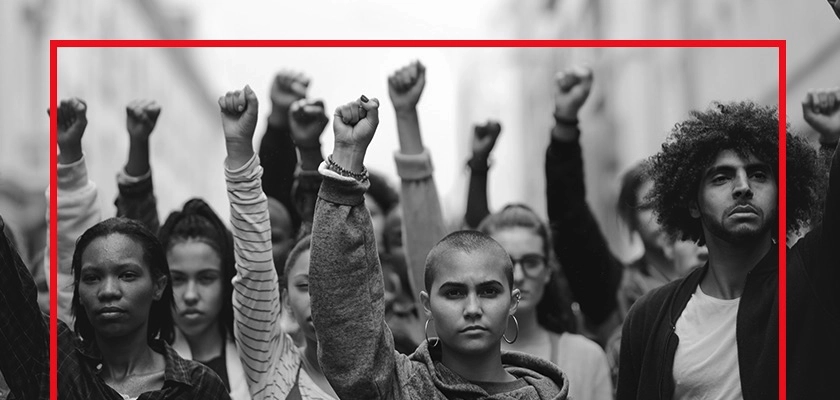Beyond Social Awareness: A Look at Alejandro Santiago
Art has often intersected with social movements and change. Alejandro Santiago's work is an example of bringing the community together to create something meaningful.

Art has always been a source of expression, both for society at large and for individuals. We are often influenced by art through advertisements, social media, and other sources, and artists can be the documenters of our society. They are often essential to making the public aware of serious issues that affect either certain groups or the larger society.
But is it enough for an artist to bring attention to a social issue, or must they search for a solution to that issue, too?
It is important that artists create works that address social issues. Keith Haring created works that brought awareness to AIDS and to the crack epidemic. Judy Chicago, along with the Guerilla Girls, brought attention to the lack of women artists in museum collections. Gordon Parks used photography to document the civil rights movement and poverty in America. These are just a few well-known artists whose work focuses on social issues is found in most art history books.
Is it enough to bring awareness to these issues?
Some artists raise money or create foundations to help fund initiatives related to their topic of choice. Others simply make work related to social issues without involving themselves personally to the point of being spokespeople. Not every artist has the goal of going beyond awareness, into the social justice arena of art. For some, circumstances compel them from just creating art to participating in actions that address the issues they raise in their work.
Alejandro Santiago (1964–2013), after traveling internationally, decided to return to Oaxaca, Mexico, to establish a studio near his hometown. The artist soon discovered that many families had left the area, just as he had done decades earlier, to find work. Santiago recognized that he needed to document his feelings about this mass migration that caused the dwindling population in his hometown.
As he worked on paintings, Alejandro decided that sculptures would be a better way to document his experience. Santiago’s project, 2501 Migrants, evolved from being a solitary project to one where he involved his community in the creation of the pieces. He hired local young people to assist around the studio and to learn his craft. Many of the faces of his sculptural pieces were based on the people in the area. The materials he used came from the area or were bought from local businesses. Although this was unintentional at first, Alejandro Santiago went beyond bringing awareness to the issue of migration. He contributed to a solution.
Although limited in scope, the act of hiring and purchasing locally answered some of the issues of migration in the area—it provided a livable wage and a job that brought dignity, and it was, therefore, a way to keep the local population in Oaxaca.
Many artists are able to come up with solutions to an issue through the actions of creating their works of art. These are not always intentional actions; they can evolve as the artist works. Sometimes, there is not a solution as the artist works. Simply bringing attention to the issues affecting society can motivate others to work on a solution. So, if an artist makes work about a social topic, are they responsible for finding a solution, too?
Questions for Discussion:
- Should artists be involved in the social issues they portray in their works of art? Discuss why or why not.
- Choose a social issue that concerns you. How can art be used to bring awareness and a solution to the issue? Explain.
- Research a local artist or a lesser-known artist involved in social justice. What social issue are they concerned with? How are they using their work as a platform? In your opinion, are they successful? Why or why not?
References
Gallery, Inverarte Art. “Alejandro Santiago.” Inverarte Art Gallery, https://www.inverarteartgallery.com/artist/alejandro-santiago/.
“Twenty Five Hundred & One.” Bond Latin Gallery, https://www.bondlatin.com/twenty-five-hundred-and-one.



